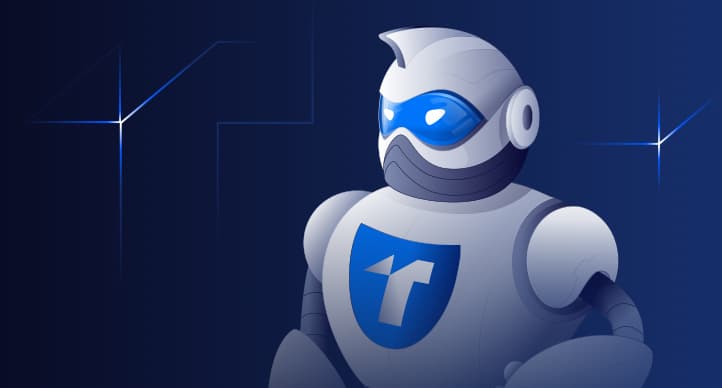Other | Nov 29, 2024 | 6 min read | By Rahul Khinchi | Reviewed by Vedran Cindrić

Rahul Khinchi is a Developer Advocate at Treblle, where he focuses on improving API workflows and developer experience. He writes technical content on API observability, security, and governance, and builds open-source tools to demonstrate real-world API use cases. Rahul has spoken at developer meetups and universities, and previously held developer advocacy roles at Syncloop. He was selected for Google Summer of Code in 2022 and has led community initiatives supporting thousands of beginners in open source.
Authentication is a balancing act.
On one hand, you want to keep your data and systems safe. Conversely, you don’t wish for security measures to get in the way of your team’s productivity.
At Treblle, we’ve been thinking a lot about how to make this easier for you. With Treblle 3.0, we’ve introduced several key authentication features:
The aim is to make your workspace safer and accessible without compromising security or convenience.
This blog will introduce you to these new features, explaining how they work, why they’re essential, and how you can use them in your Treblle workspace.
Before jumping into how Treblle integrates these features, let’s quickly define them.
Single Sign-On (SSO) lets you log in once and access multiple applications or systems without needing to reauthenticate every time.
For example, if your team uses Okta or SAML, you can link it with Treblle to let users log in with their company credentials. This feature leads to no more problems of "forgot password” emails or manually managing account access for each teammate.
MFA adds an extra step to the login process, typically requiring something you know (like a password) and something you have (like a mobile authentication app).
This means that even if someone can grab your password, they still can’t get in without that second verification step, which adds a layer of protection.
Social Sign-On allows users to log in with existing accounts, such as Google or GitHub. It’s perfect for teams that prefer using existing credentials over creating new ones.
Now that you know the “what” and the “why,” let’s talk about the “how.”
NOTE: Only the workspace owner can access this setting.
Treblle Authentication Settings Page
Selecting Authentication Type inside Settings
This method ensures secure communication between Treblle and your provider.
Required fields inside SSO configuration
Testing SSO configuration
Logging in with SSO
Once you set up SSO, logging in is simple:
Login to Treblle account with SSO
Adding identifier
Adding an MFA is just as straightforward:
Multi-Factor Authentication inside Account settings
QR code and a password field needed for MFA verification
These steps ensure your workspace stays secure while being easy to access.
With Treblle’s new authentication features, security and accessibility go hand in hand.
Once you enable SSO in a Treblle workspace, team members can log in using their organization’s identity provider.
If someone switches between an SSO-protected workspace and a standard one, Treblle prompts them for extra authentication to ensure no one accidentally stumbles into areas they shouldn’t.
Layering MFA on top of SSO gives your workspace an additional shield.
For example, after logging in with SSO, a user might also need to enter a six-digit code from Google Authenticator before gaining access. This setup is simple and ensures an extra layer of protection.
Social Sign-On offers a quicker way for smaller teams or contractors to start. Instead of creating new accounts, team members can link their Google or GitHub accounts and get straight into the workspace.
By centralizing login credentials through SSO and adding MFA, you reduce the number of attack vectors for potential breaches.
With fewer passwords, there’s less risk of someone reusing weak or compromised credentials.
SSO simplifies onboarding and offboarding.
When someone joins your team, you don’t need to create accounts manually—just add them via your identity provider.
When someone leaves, revoke access at the provider level, and they’re automatically locked out of Treblle.
Only some people want to log in the same way.
Social Sign-On allows your team to pick what works best for them, whether that’s Google, GitHub, or traditional credentials.
To get the most out of Treblle’s new authentication options, keep these best practices in mind:
Treblle 3.0 introduces authentication features that secure your workspace without adding unnecessary complexity.
Whether using SSO for centralized login, MFA for added protection, or Social Sign-On for quick access, these tools are here to improve the developer experience when building your APIs and your team.
Try them out and let us know what you think. We’re always looking for ways to improve Treblle for developers like you.
Need real-time insight into how your APIs are used and performing?
Treblle helps you monitor, debug, and optimize every API request.
Explore Treblle
Need real-time insight into how your APIs are used and performing?
Treblle helps you monitor, debug, and optimize every API request.
Explore Treblle
 Other
OtherHackers breached FIA’s driver portal, exposing Max Verstappen and other F1 drivers’ data. In this article, we covered a detail breakdown, security takeaways, and how it could have been stopped.
 Other
OtherIn Sept 25, JLR suffered a major cyber attack. In this article, we provided a complete breakdown of the JLR breach, detailing what happened, how it occurred, and the lessons learned.
 Other
OtherThe newly developed Treblle Next.js SDK supports the App Router, Pages Router, and Edge runtime.